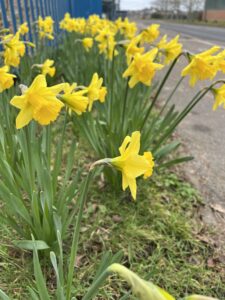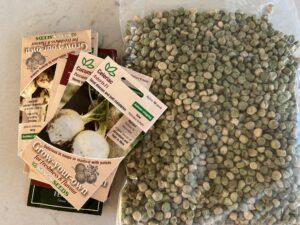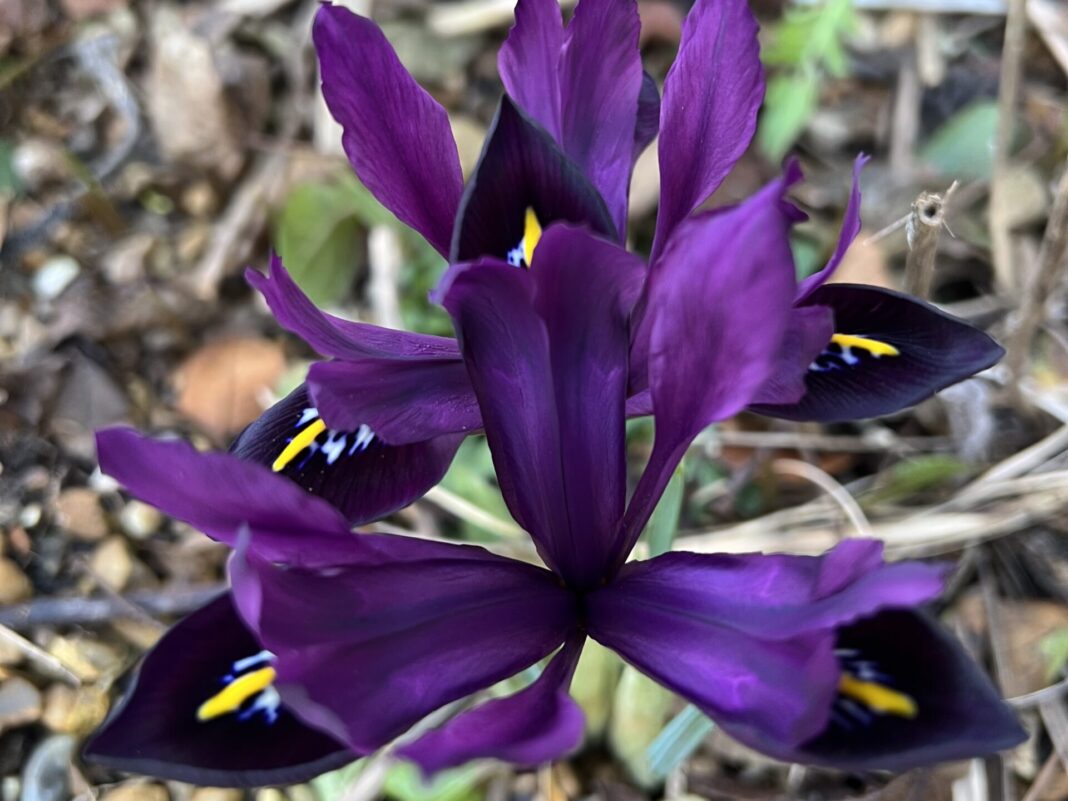What a difference a few weeks make. Dawn chorus has erupted in song, and our blue tits have become territorial and angry when we go near their chosen nest box. Snowdrops are in full flower, and crocus, iris and even daffodil are now beginning to bloom. My favourite host of early golden daffodil is a swathe along Rye Harbour Road – an unexpected gorgeous yellow ribbon by industrial estate buildings. Colourful window boxes filled with tete-a-tete and primula are beginning to appear all over Rye. In our own garden, a bit of a calamity has happened amongst our pots of tulips this week. Animals (mice?) have dug holes in the soil and eaten many of the bulbs. We have put netting over what is left to protect them.

Soil is warming up and this is the time we dig up and move plants which have outgrown their space. This week, it has included a Japanese quince, myrtle (both too big) and my favourite grass, stipa gigantia, which needed to be split and moved further away from a garden path. We are pretty brutal when it comes to dividing grasses and creating new plants: if small, I literally tear the roots into separate clumps. If too large, I slice through the root ball into two or three clumps with a spade. At this time of year, it feels like plants are most forgiving when it comes to surviving damaged roots and the trauma of being moved. We are also cutting back tall stipa to ground level. For smaller grasses, we use a rake to comb through and remove dead leaves. Clearing the ground produces hidden snails, as well as worms and insects. Our resident robin and blackbirds love the bounty. We are trimming back roses, wisteria and other bushes, and burning the dry grass stems and leaves. But please, if you have a bonfire or pile of debris, check for hibernating hedgehogs before you set fire to it.

Vegetable seeds have arrived. A little unexpectedly, I ordered 1kg of green pea seeds, instead of 1 packet. We will be experimenting with growing pea shoots, as well as pea soup, and sharing our pea seed bonanza with other allotment holders. February signals the beginning of seed planting for us. I begin with our leek seeds – I find if I scatter the seed into a deep seed tray (an old mushroom container is my favourite), they will quietly sprout and slowly grow with little care over the next few months, ready for planting out in May. Greenhouse or windowsill access means we will also start peppers, tomatoes and even cucumbers and aubergine in February. And our allotments needs our attention: Weeding, tilling and addition of compost to get the soil ready for planting.
Image Credits: Abigail Cooper-Hansen .



